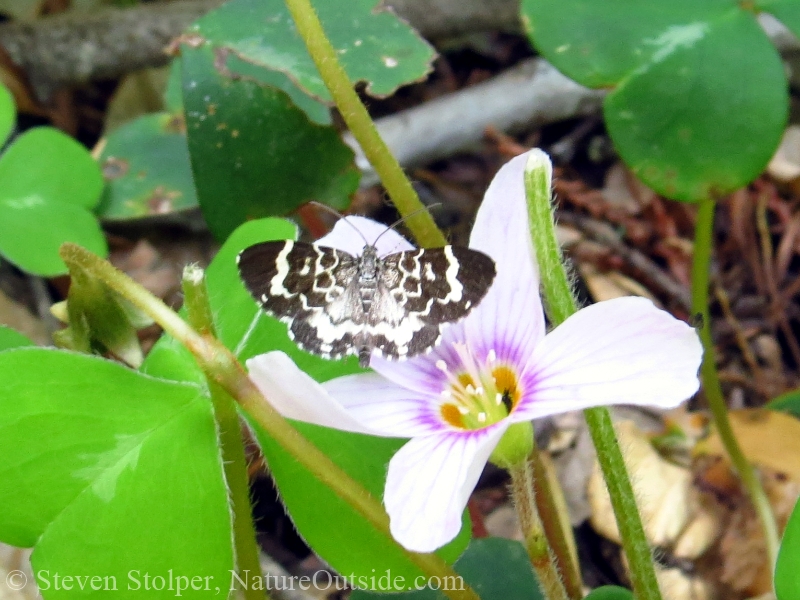
At the start of the summer, I went for a hike in the Santa Cruz Mountains. These peaks form a ridge between the Pacific Ocean and California’s Silicon Valley.
My trail starts in mixed-oak forest at the top of the mountains and descends deep into lush redwood forest. The towering giants blot out the light from the sun, leaving patterns of dappled light on the cool forest floor. The air becomes cool and moist.
Some people I know would call a hike like this “boring.” It’s because you see fewer large animals in a redwood forest than in other ecosystems. Little light reaches the redwood-needle-covered floor, so there is less diversity of plant life. As a result, there is less food to support larger animals.
But I never have a “boring” hike. There are always wonderful sights to see. And this is because I’m not limited by scale.
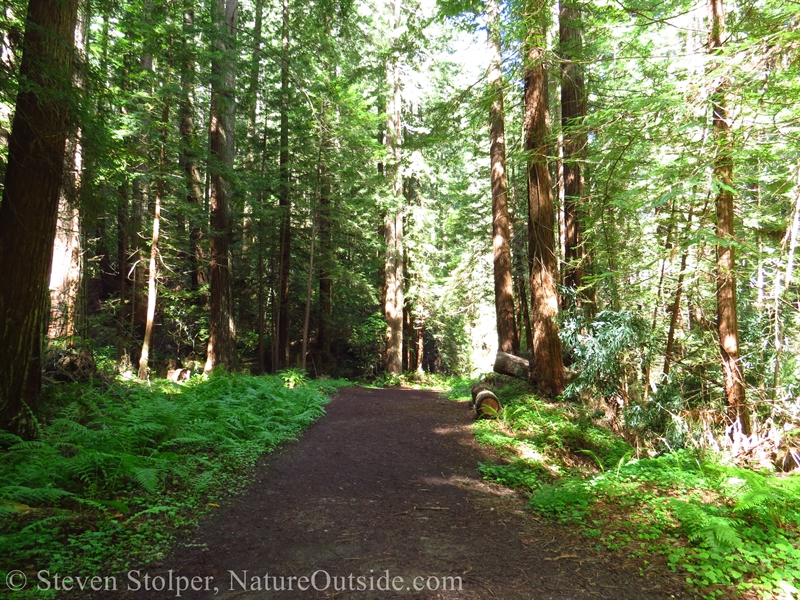
The trail widens in this part of the forest
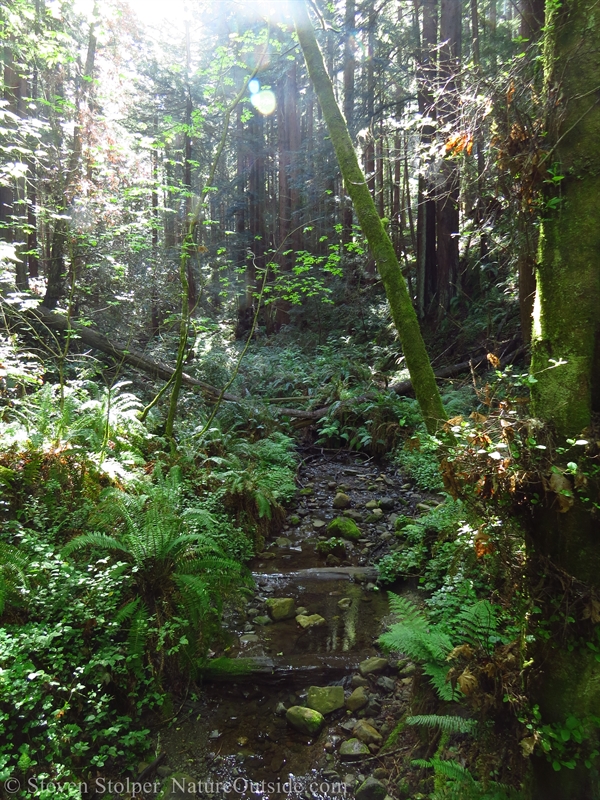
The interplay of light and the running creeks make redwood forest an amazing place to hike. This is Purisima Creek.

Seeing Beyond Scale
I’ve written before about scale. You are larger compared to a bird than the largest dinosaur is to us. It’s a matter of perspective. Quite often we look at things comparable in scale to ourselves. But if you look smaller, if you break out of the self-imposed box, you will never have a “boring” hike.
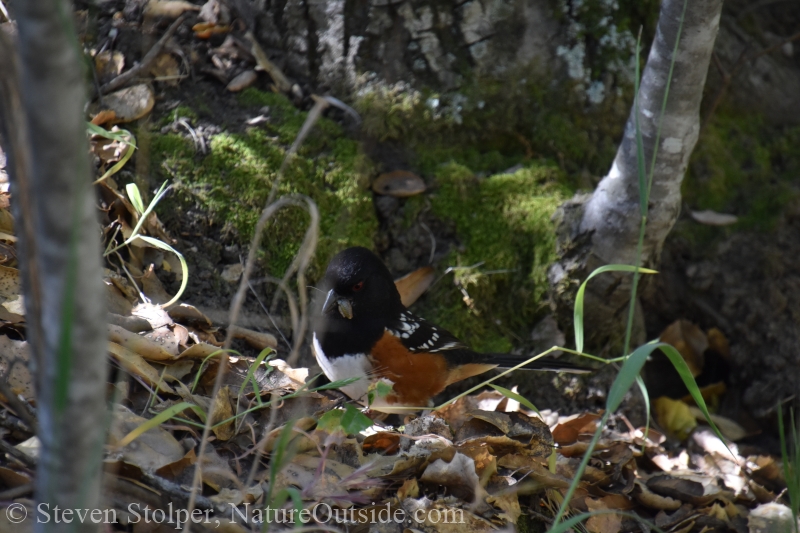
I found this Spotted Towhee (Pipilo maculatus) foraging for food on the forest floor. It has caught an insect and is holding it in its beak.
American author Wayne Dyer said, “When you change the way you look at things, the things you look at change.” The forest is composed of many parts of different scale. Each piece is a part of the larger whole. The leaf, the tree, and the hillside all comprise the forest’s “composite character.” And sometimes the smallest pieces are the most ostentations. But to see them we must rise above our proclivity to notice only the grand scale.
When you change the way you look at things, the things you look at change.
– Wayne Dyer
The Smallest Flowers
I continue my nine-mile journey into the forest. Small native flowers reveal themselves at every turn. Their beauty is easy to overlook if you don’t pay attention to scale.
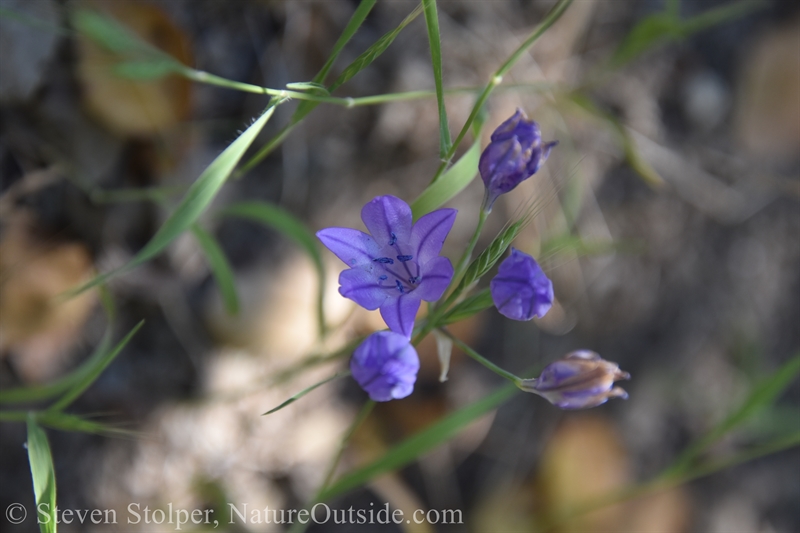
Ithuriel’s Spear (Triteleia laxa) is a common native perennial in the Lily family.
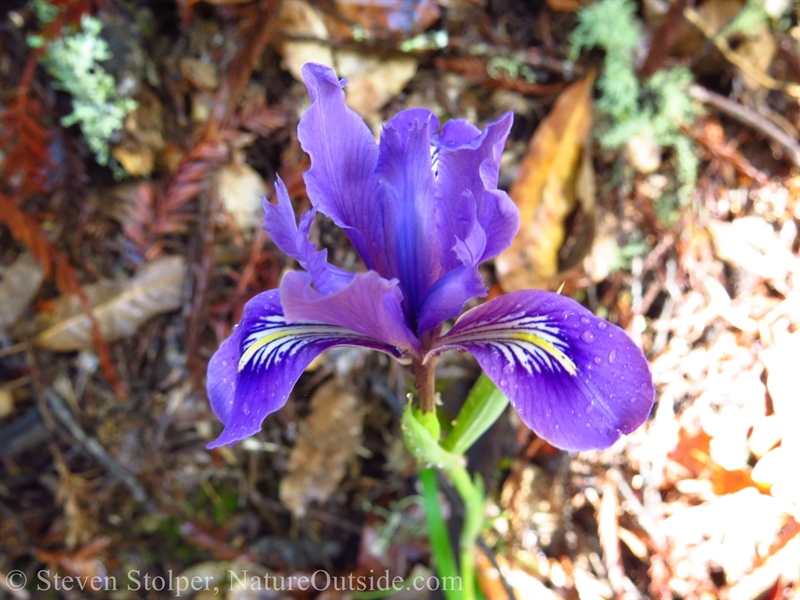
Douglas Iris (Iris douglasiana) is a beautiful wildflower native to the coastal regions of Northern and Central California.
When you notice small details, you amplify nature. It forces you to contemplate our place within it.
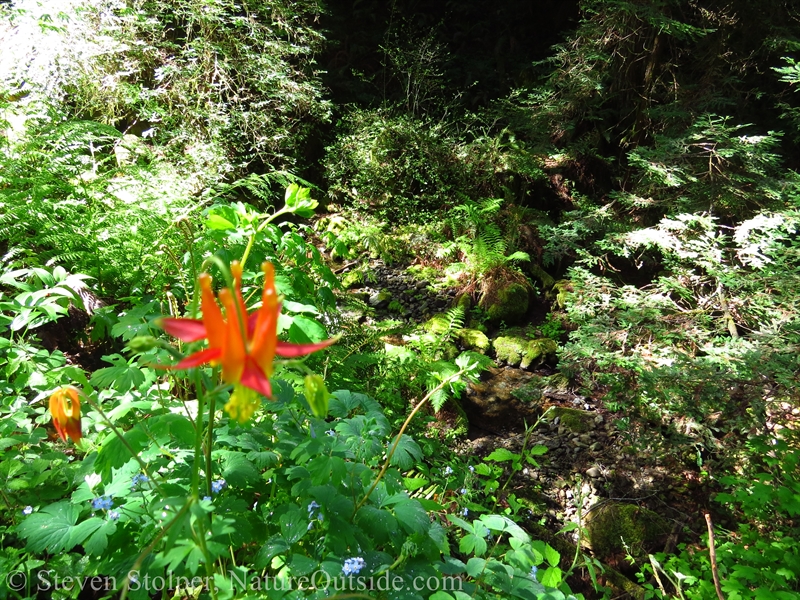
Western Columbine (Aquilegia Formosa) is remarkable because the flower is “upside-down.”
When you notice “small nature,” you live and breathe beyond mere routine.
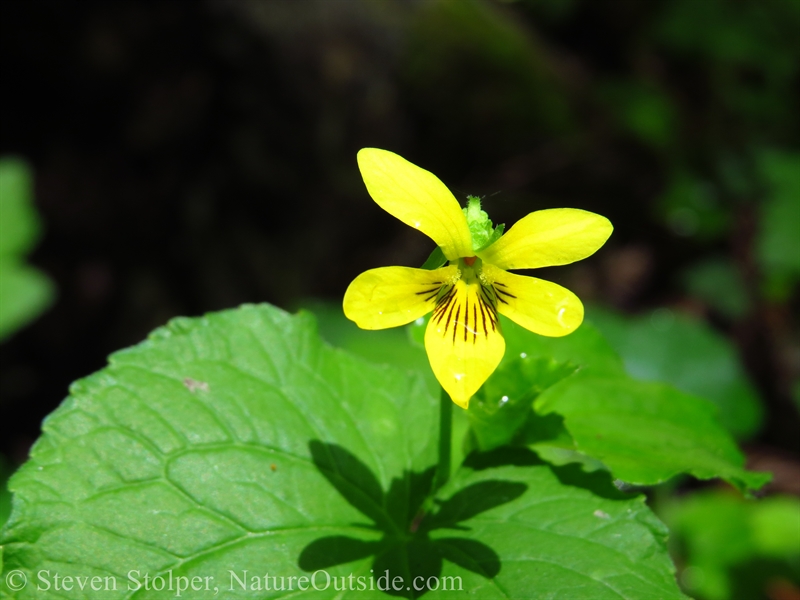
The Redwood Violet (Viola sempervirens) is so small you would miss it if you weren’t paying attention.
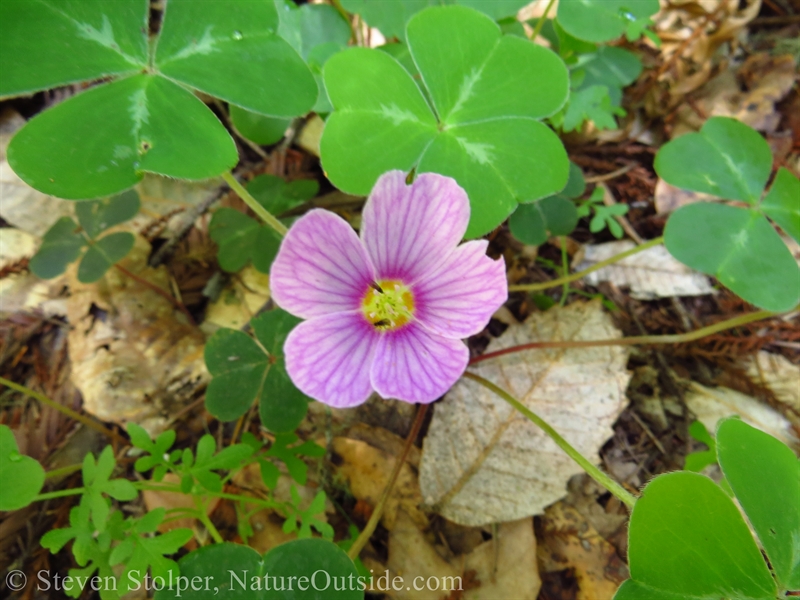
This Redwood Sorrel (Oxalis oregana) is a wild edible. Can you spot the pollinators inside the flower?
Banana Slug Crossing
I had some camera problems on this hike. So some of my photos are out of focus. But I want to share this photo of a Banana Slug (Ariolimax) crossing he trail. The slug is about five inches long. What fascinates me is the way it conforms to the half-buried branch as it negotiates the obstacle.
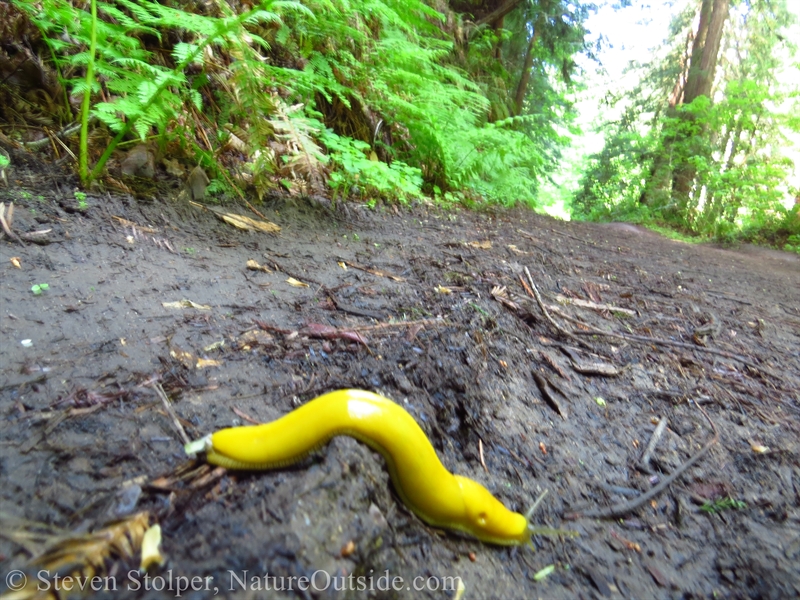
Banana Slug (Ariolimax) showing its agility.
I settled in for lunch beside a copse of smaller redwood trees. Sitting in their enormous shadows made me feel the size of a Banana Slug.
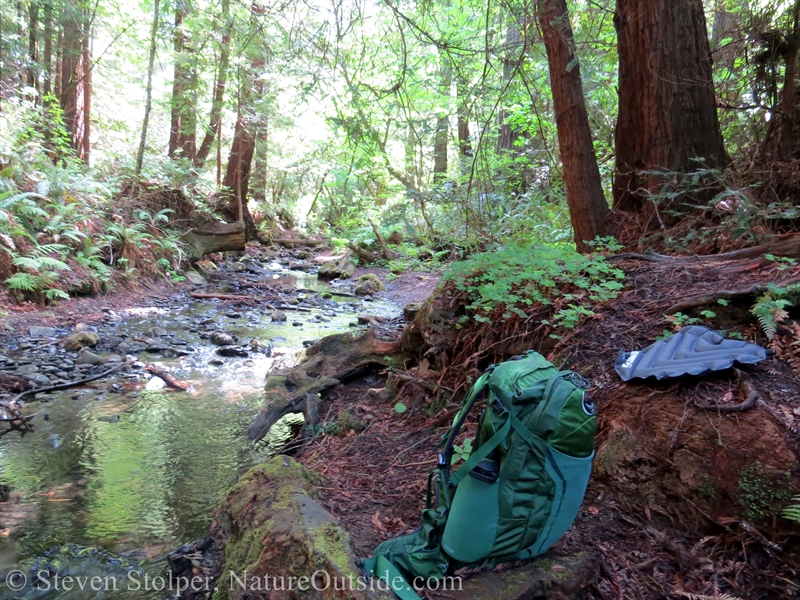
My lunch spot.
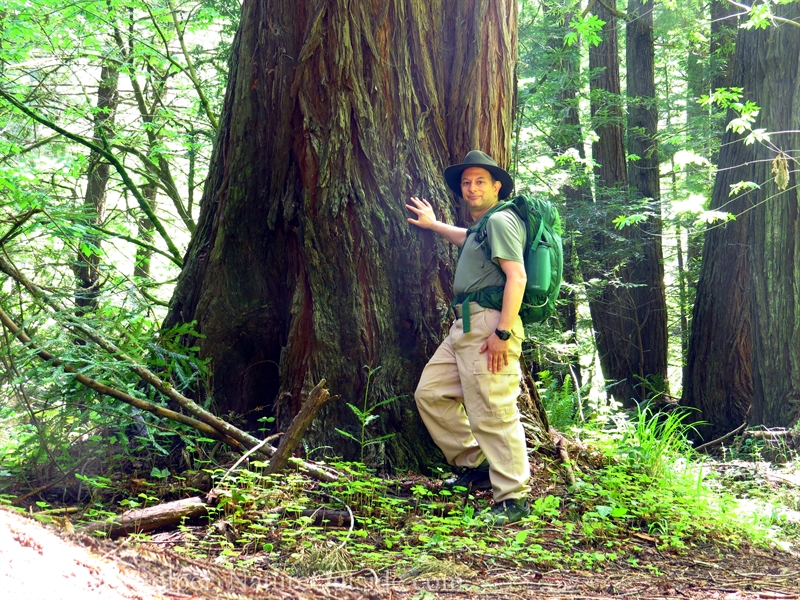
Standing beside a medium-size redwood
Can You See the Plants Move?
Plants move. It’s called phototropism. But they move so slowly we often don’t notice. One of my favorite plants in the forest is Redwood Sorrel (Oxalis oregana). It is easy to identify and tastes like the best sour-apple candy you’ve ever had. Remember Jolly Rancher candy? Redwood Sorrel tastes even better!
Redwood Sorrel is adapted to the deep shadows of the redwood forest. So what does it do if it finds itself in full sun? To survive, it must not run out of the chemicals that absorb light for photosynthesis. If it does, it will burn. So the plant moves its leaves downward to increase the angle of incidence for light falling on its leaves. This decreases the amount of energy falling on the face of its leaves. It’s a dramatic difference and easily appreciated by someone hiking past.
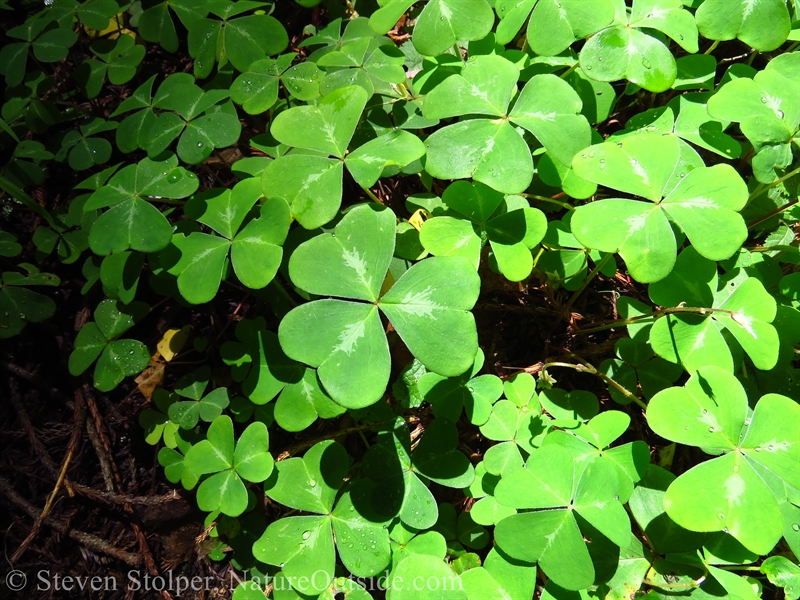
Redwood Sorrel in the shade.
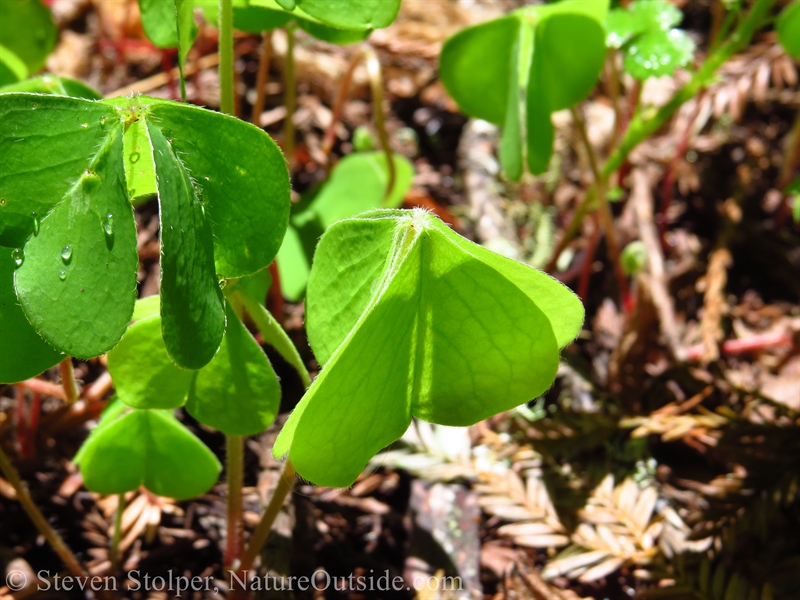
Redwood Sorrel in the sun. Compare it with the previous picture. Notice the phototropism.
I continue my hike, along the stunning Purisma creek.
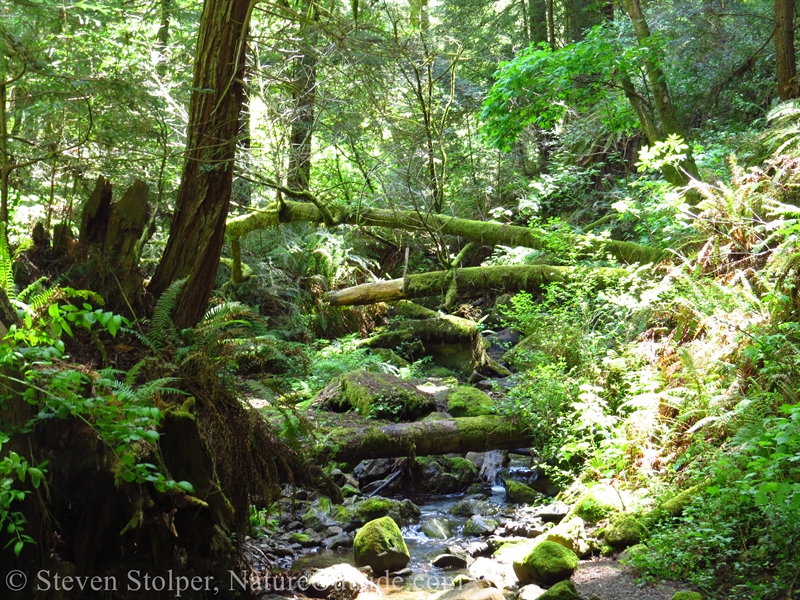
Mystery in the Forest
Looking for the small things leads to mystery, more often than not. As I hike I notice the body of what I think is an American Shrew Mole (Neurotrichus gibbsii). It’s lying along the edge of the trail. At first glance, the body seems intact. But a closer look reveals a wound on the back of the animal. And the corpse is fresh, only several hours old.
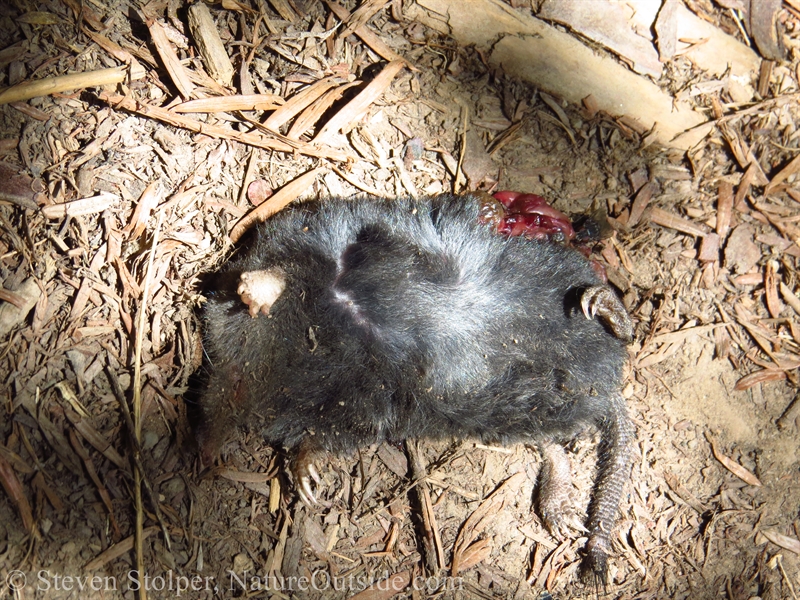
The dead mole.
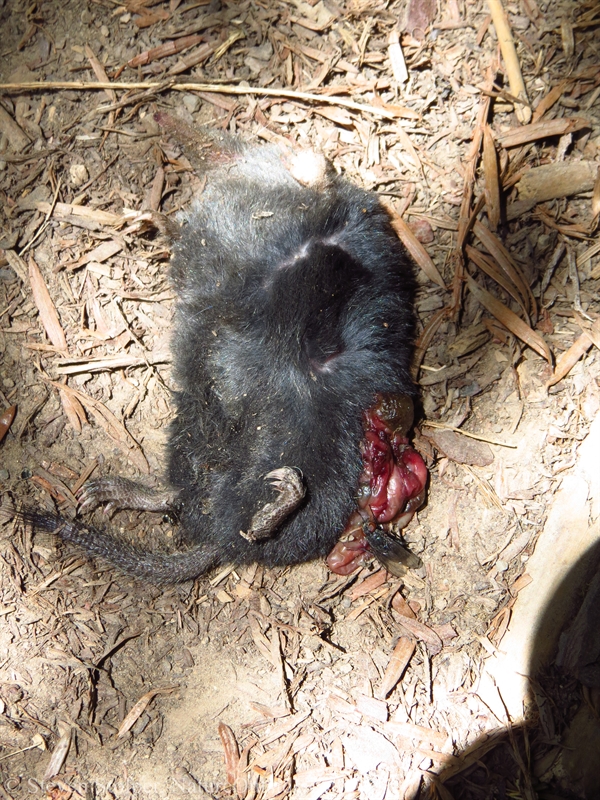
There is a wound on its back, at the rear of the animal.
Could the animal have been run-over by a passing mountain bike? But the body is so far to the side of the trail, the odds of a cyclist striking it are low. Also, most of the body is intact, not flattened.
It’s also a clue that the body of the mole has not been consumed. I have seen the bodies of dead moles alongside trails before. And I learned that foxes like to kill them, but not eat them. I’ve been told that moles taste terrible – but I have not attempted to find out for myself! When I see the bodies of fox-killed moles, they don’t seem to have a scratch on them, except for the occasional puncture mark from canine teeth.
This animal’s innards seem to have exploded out the back. It makes me think the mole was struck by a bird of prey. Animals like hawks and owls strike their prey with terrific force. Perhaps it was foraging in the early morning and was killed by an owl? Seeing what it is, the owl leaves it where it finds it.
With possibilities running through my head, I continue my hike.
Rare Beauty
This section contains an affiliate link.
Toward the end of my hike, I notice a butterfly or moth of a type I’ve never seen before. It’s tiny! And I use the zoom on my camera to take some quick pictures.

An animal I’ve never seen before. It’s a moth (Trichodezia californiata)!
After my hike I do some research to try and discover the identity of this striking creature. I can’t find it in Kaufman’s Field Guide to Butterflies of North America. But this does not surprise me because I suspect it’s a moth. One of the easiest ways to tell the difference between a butterfly and a moth is to look at the antennae. Butterfly’s antennae are club-shaped with a long shaft and a bulb at the end. Moth’s antennae are feathery or saw-edged. This insect does not seem to have bulbs at the end of its antennae.
I spend an hour or so searching online before I discover that it’s a moth named, Trichodezia californiata. It’s fun to see a new animal for the first time!
And the discovery was made possible because I noticed the little things…
Related Articles on NatureOutside
Wildflowers of the Serpentine Realm
For fun facts and useful tips, join the free Bushcraft Newsletter.



Good to see you back Steven. This was a nice article for me as my hobby is macro-photography. When I have my camera with me I walk through the forest much slower, really noticing what is there. It has opened up a whole new world for me. The lens lets me see what my eyes alone cannot. iNaturalist is an app we use in the field to help identify new plants and creatures with our phone camera. If we have a good DSLR camera picture we download the picture to the computer at home and then use iNaturalist app to take a picture on the computer to identify the plant or animal.
Thanks, Mel! Macro-photography is something I’ve wanted to try. I’ve been amazed by what I can see if I choose to look at tiny details.
And I didn’t realize iNaturalist can do identification. Very cool!
Loved this article, Steve. So often on hikes, I’m staring at my feet to make sure I don’t trip on a rock or tree root. I have to remind myself to “look up!” There is so much beauty in the forest, the grasslands, or wherever we hike/walk – even the Urban landscape. Cheers to an amazing 2022 of seeing even the small things. And, thank you for all of the fun and informative tidbits I always find in your Bushcraft Newsletter.
Thanks, Ardis! I’m glad you enjoy the newsletter. Happy New Year!